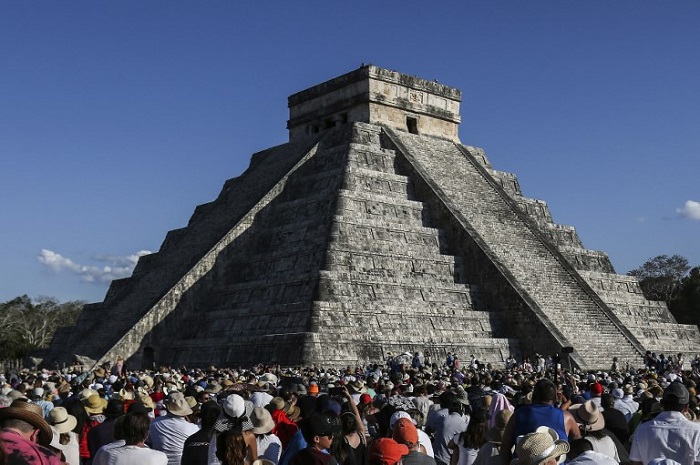“From Friday 20th, through Monday 23rd September, the archaeoastronomical phenomena corresponding to the autumn equinox will be visible in different ancient Maya cities”, said Yucatecan astronomer Eddie Ariel Salazar Gamboa, who highlighted Chichen Itza, Dzibilchaltun and Oxkintok, among other Maya cities.
However, the true “equality phenomena” will occur on Sunday Sep. 29, because “it is on this date the day and night will last exactly 12 hours each.”
He stressed the importance of these events for the ancient Maya, both to strengthen their religion and their chronology as well as from a social point of view.
He explained that on Saturday Sep. 21st, the Sun will appear on the horizon at 6:43 hours and will be hidden at 18:49 hours,(Yucatan time), the day will last 12 hours and six minutes, because it is closer to the Tropic of Cancer.
“For people living in the Earth’s equator, the day will have exactly 12 hours, that is, at the same time that it is the change of season is the equinox itself, that is what is known as the equality phenomena,” the expert said.
In contrast, in Yucatan, the equinox by definition will be on Sunday Sep. 29, since the Sun will rise at 6:44 a.m. and set at 6:44 p.m., that is, the day and night will have exactly the same duration of 12 hours.
He mentioned that autumn is the shortest season of the year, and this occasion it will last 89 days, 20 hours and 10 minutes.
Salazar Gamboa explained that in the case of Chichen Itza, the descent of Kukulcán (Mayan deity that will descend from the sky to take shape in El Castillo, where it will crawl towards the nine levels of the underworld), was seen on Saturday Sep. 21st.

People surround the Kukulcan Pyramid at the Mayan archaeological site of Chichen Itza in Yucatan State, Mexico, during the celebration of the spring equinox on March 21, 2019. (AFP/Hugo Borges)
While in Dzibilchaltún, the king star enters through the main door of the Temple of the Seven Dolls, illuminates the dark room and exits through the door of the West.
Likewise, the third phenomenon will be observed in the False Arc of the Ah Canul Group in the archeological site of Oxkintok, where sunlight is filtered until it is projected to an ancient calibrator.
Finally, he stressed the importance of promoting archaeological astronomical phenomena, since they are a true wonder, unique in the world, and obviously a major tourist attraction.
In addition, it is important to have a certified tourist guide able to narrate these phenomena, so that visitors can understand what is happening and its meaning.
The Yucatan Times Newsroom



2 comments
I really want to go and presence the equinox of Chichen Itza, it seems to be an unforgettable astronomical phenom! Totally worth the travel to Yucatan!
Absolutely amazing, living the Mayan equinox is one of the best experiences, the amazing pyramid of Chichen Itza is a wonder that makes you feel an incredible positive energy.